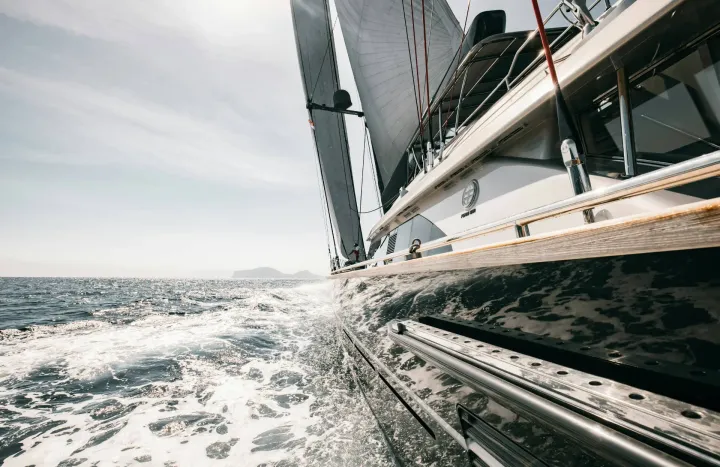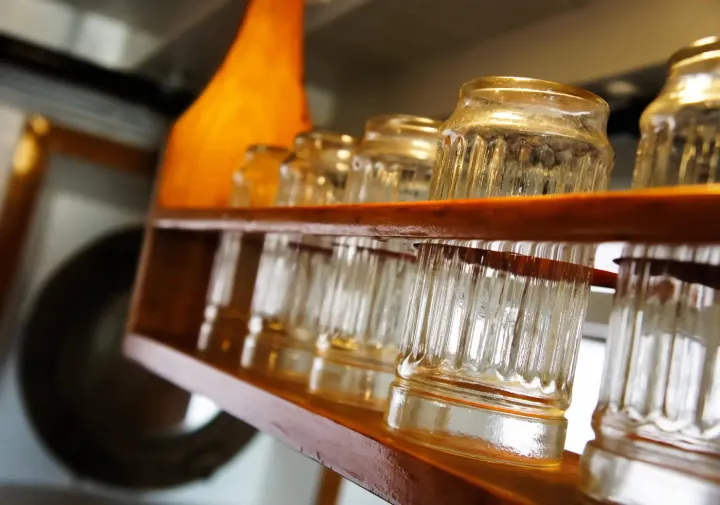A jib can be a great tool for your sailboat. But how does it work? Do you actually need one? Read on to find out!
Some sailors choose to have a second sail on their boat called a jib. But what does a jib actually do for a sailboat?
A jib is a secondary sail attached to the front of the sailboat. It increases the boat’s speed, improves handling, and increases the efficiency of the main sail. It also creates an easier method for getting out of irons.
A jib can be a handy tool. But are there any downsides to using a jib? How does a jib work? Read on to find out!
Where is the jib on a sailboat?
The jib is attached to the front of the mast on the other side of the main sail. It is connected to the mast and front of the boat by a rope called the forestay. The forestay runs along the top of the jib from the deck up to the mast.
What does the jib do?
The jib serves several purposes on a sailboat. It increases the speed and handling of the boat. It also increases the efficiency of the main sail.
There is also a number usually associated with the jib. It should look something like this: J1, J2, or J3. This number tells you what size the jib is. A J1 jib is on the longest stay, while a J3 is on the shortest. If you have a roller-furling jib, you can easily switch from one length to another.
Speed and Handling
The reason the jib increases speed is simple: adding a secondary sail increases the amount of wind the sail can catch. This increase in wind, in turn, gives the boat more power so it can move faster.
The handling improvements require a more in-depth explanation. First, you must understand where the sailboat pivot point is. This point is usually just behind the mast. If you’re only using the main sail, most of the wind is behind the pivot point. This can make it more difficult to steer your boat in a strong wind since you have to fight against it.
Adding a jib to your main sail helps balance the wind's forces to the other side of the pivot point. This balance makes it easier to maneuver the boat in strong winds. It also keeps the boat from losing as much speed during strong headwinds.
This same principle also applies to getting your boat out of irons. Typically, skulling requires a lot of physical labor. Using a jib helps you use less force. You just have to point the jib to one side of the bow, which will push you out of the irons.
Main Sail Efficiency
In addition to increasing the speed and handling of the boat, the jib also increases the efficiency of the main sail. This increase in efficiency comes from aerodynamics. The jib can redirect the wind toward the main sail. This, in turn, makes it easier for the main sail to collect the wind.
Do you need a jib?
A jib is just an extra tool that makes sailing easier. You can definitely just use the main sail, though! While a jib helps you, it does come with drawbacks. If you’re just a beginner at sailing, it may be better to just stick with the main sail until you have more experience.
There are also other types of foresails you can use instead. Some of these include Genoa, square sails, and gennakers. Each has different uses and drawbacks, so be sure to do your research!
Drawbacks of a jib
One of the drawbacks of using a jib is that it can be challenging to manage for beginners. This is because the jib is controlled by two ropes instead of just one. It can be overwhelming if you aren’t used to handling that much equipment!
It also takes some intuition to know when you switch the jib from one side of the boat to the other. If you change the jib too early, it will stop your boat from turning. On the other hand, the wind will push your boat leeward if you switch the jib too late.
Conclusion
Using a jib can be complicated. But once you have enough experience, it can be an excellent tool for your sailing rig! It can just take some time to get used to it.
The key to using a jib is practice. Suppose this is your first time using one; finding someone who already uses a jib while sailing might be a good idea. That way, you have the opportunity to see how a jib works. You can also learn how to read the signs the jib gives you.
Ultimately, it’s up to you to decide if a jib suits you. If you do decide to use one, it comes with a lot of great benefits! Just take the time to learn how to use it properly first.



